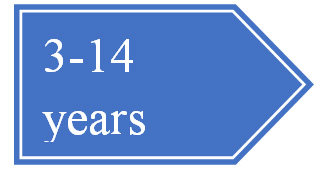AUSTRALIAN ENGINEERING COMPETENCY STANDARDS STAGE 2 -EXPERIENCED PROFESSIONAL ENGINEER
There are multiple knowledge and skill base, application ability of engineering skills, ethics, attitudes and professional skills, which are to be demonstrated by engineers seeking to practice independently or unsupervised. These skills can are generally expressed professionally making use of the Stage 2 Competency Standards.
Purpose of the Stage 2 competency standards
Chartered membership of Engineers Australia (CPEng) and registration on the National Engineering Register (NER) are generally granted based on the results of the Stage 2 competency standards. Engineers Australia has the exclusive access to Chartered membership. The general public worldwide and the general businesses and government seek these professional credentials. A career long obligation to maintain standards and ensure greater competence in the chosen area is naturally facilitated by achieving a CPEng.
What are the expectations from Professional Engineer?
It is essential for an experienced professional to live by the expectations of expectations concerning their competence, application of competence and manner of self-conduction.
Experienced professional engineers:
- Showcases an appropriate understanding of client requirements, stakeholder requirements and the needs of the society on the whole
- Seeks optimization of outcomes associated with society, environment and economy throughout the engineering product or program lifetime
- Effective inter-professional and inter-discipline interaction, besides effective public interaction
- Facilitating total integration of engineering contribution among the project, program and process.
- Hold responsibility for: - Social, business and governmental possibility interpretation concerning technology
- - Making policy decisions informed appropriately by the possibilities and consequences to the greatest extent
- - Understanding of the desirable outcomes and related costs, risks and limitations
- -Development of suitable solutions for complex set of scenariosby applying appropriate knowledge from diverse sources
- - Taking care of appropriate consideration of technical and non-technical integrations
- - Manage risks for imparting sustainability
- - Aligning theory and fundamental principles with all the aspects of project, program or a process
- - Understanding of the relation between new developments and established practices and experience alongside relations with other interactive disciplines
The available interactions between people and technology are considered by experienced professional engineers, besides the physical outcomes that are generally facilitated by engineering outcomes. The process of development of the overall science of engineering and new principle and technologies within the overall discipline of engineering through appropriate research can be seen to be a major responsibility of experienced engineers. The development and maintenance of regulatory codes, providing knowledge to new engineers and engendering a continuous process of improvement in the field is also a major task associated with them.

Stage 2 competency standards
The Stage 2 competency standards as they are applicable to all the engineering units:
- Technical proficiency
- Obligation to community
- Personal commitment
- Workplace values
Elements of competence and indicators of attainment are generally contained in each individual unit. The necessary capabilities are the elements of competence necessary in each unit, whereas, the demonstration of attainment of necessary competence is to be considered and guided by the indicators of attainment.
Documentation Expected Towards the Application
A multi-level documentation process is necessarily undertaken for the application process of CPEng towards Chartered Status recognition as a Professional Engineer. The evidence towards your engineering claims put forward are to be documented by the necessary documents.Some of the submission requirements are required byEngineers Australia for Chartered Professional Engineers.
- 1. Engineering Competency Claims (ECCs)
- 2. An up to date CV
- 3. Engineering Experience Record (EER)
- 4. Continuing Professional Development (CPD) Record
Your overall personal involvements in technical engineering projects are to be documented by the Engineering Competency Claims. Use of appropriate words in CDRReports is essential for enhancement of appeal, which is facilitated by professional experts and writers. The following aspects are to be focused on in the Stage 2 Competency Standard: the applicants must show commitment to service and demonstrate workplace values, technical proficiency and obligations towards engineering profession and community generally.
In about 700 words your previous professional experience consisting of all employment role and background is collated by the Engineering Experience Record (EER). Having a moderately complex and time consuming nature, there is a need for an optimum understanding of EA expectations.
The assessment pathway selected by you is a determining factor for the kind of submission required. You can choose an appropriate pathway towards the eChartered Competency Assessment.
- 1. Professional Development Program (PDP)
- 2. Engineering Competency Report (ECR)
- 3. Mature Experience Engineer (MEE)
- 4. Mutual Recognition Agreement (MRA)
A total number of ECCs or engineering competency claims ranging from 11 to 16 can be submitted while choosing eChartered Pathway for submission. 16 ECCs are to be submitted by applicants opting for Engineering Competency Report (or ECR pathways). Personal experience and exposure to technical projects are to be detailed in each ECC claim. EA has shared a set of Stage 2 Competency Standards, which are to be used by professionals while developing each ECC. Time inefficiency and toil are extreme in this case, resulting in inappropriate formation of all 16 ECCs, which can impact the overall application.
Four essential elements of EA Stage 2 Competency Standards:
- 1. Personal commitment towards the service requirement, as an engineer
- 2. Adherence to values at workplace, as an engineer
- 3. Displaying technical proficiency, as an engineer
- 4. Community obligation, as an engineer
An overall solution to the submission of documents for Chartered Status (CPEng) registration process with the EA (Engineers Australia) is facilitated by CDRReport. We provide an all-in-one solution for ECC, EER and CPD development at CDRReport. The development of all the aforementioned documents is assisted to and reviewed by our expert team at CDRReport.
Assessment
Two stages of assessment of competence is generally required to be undertaken for an Engineers Australia membership and registration on the National Registers:
- Stage 1 Competency Assessment
- Stage 2 Competency Assessment
Stage 2 Competency Assessment
Stage 2 competency assessment is required to be undertaken in case, there is a need to apply for registration on a National Engineering Register or get Chartered Status
Earn a prominent status as a Chartered Engineer and watch for the standard you have reached as compared to the peers. Gain a top status in this profession and attain the below mentioned:
- 1. Global recognition –Want to work abroad and get recognized internationally, getting chartered is the best solution. A worldwide recognition of skills and professionalism is generally reserved for Chartered Engineers.
- 2. Career progression –Acquiring chartered status allow you to gain an upper hand and show commitment to the highest professionals. In search of a senior or consulting role? Getting chartered is the appropriate solution.
- 3. Leadership development –Already tested against industry-recognized standards, Chartered Engineers are peer-assessed. The 16 key competencies are the basis of benchmark for you, as technical, management and communication skills are essentially assessed.
So what are you waiting for? You may have everything you need for being recognised as a chartered Engineer!
Various areas of practice can be considered for becoming chartered by Professional Engineers, Engineering Technologists and Engineering Associates.
Start your self-assessment online here. You can manage the entire process online now.
Become Chartered - The Six Step Process
How many years of experience do you have?
Already a member of Engineers Australia? Your work will get a concrete value on becoming chartered, especially when you are a practicing senior engineer for 23 years or more.

Plan for your future, Explore the criteria required to get chartered.

Get Chartered, Get Started. Start the 6 step process with your self-assessment

Achieve the Chartered status via an alternate pathway. Go to Chartered via Interview
Is there a need of stage 2 assessment?
If you are not a member of Engineers Australia
The satisfying of the requirements set forth by Engineers Australia is mandatory to be registered, even though membership to the same is subjective.
A grade of full member and joining Engineers Australia is deemed to be mandatory for the attainment of Chartered status. (MIEAust, TMIEAust or AMIEAust Please refer to the Chartered section of this website to find out more.
If you are a member of Engineers Australia, but not a Chartered member
An application in your occupational category for Chartered Membership is essential. Chartered status is to be accompanied by registration. A clear indication of the areas of practice you require in the application is essential.
- Visit here for more details- Chartered Membership
- Application process is detailed in the Chartered section of this website
I am a member of an overseas engineering association
A Mutual Recognition Agreement (MRA) with Engineers Australia is necessary to be checked of the overseas engineering association.
If there is an agreement, you can use the option of applying through Mutual Recognition Agreement. Login and apply now.
If you are a current Chartered member
An application for registration on NPER is the only need in case you are a current Chartered Professional Engineer (CPEng) and you have an updated CV and your review process is up to date. You would need to submit an up to date CV and recent CPD record if you want (This is not mandatory for submission).
You can easily identify a current Chartered Professional Engineer (CPEng) with an achievement of CPEng since 1995 or is having a practice review and CPD outcome in the last 5 years.
NB: All people registered on the NPER needs to meet these criteria
Visit National Engineering Register for more information.
How Can We, Global Immigration Help (www.globalimmigrationhelp.com) Assist You ?
Get premium quality Chartered professional engineering report CPEng with assurance of 100% guaranteed success. 100% Plagiarism free report along with all 16 elements.





